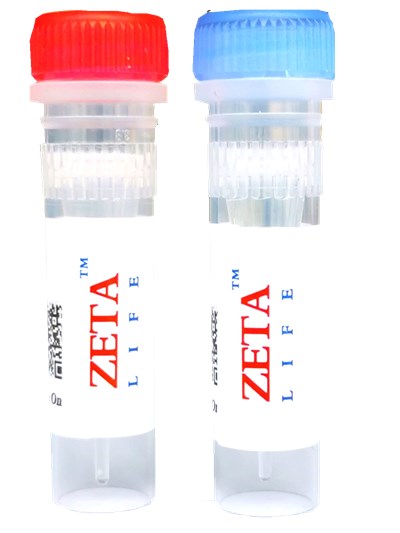

DiD cell membrane red fluorescent dye
Product Numbers: DD-10, DD-25
Specification: 10mg, 50mg
Storage conditions: Store at -20 ℃ in dark place, valid for one year. .
λEx / λEm (MeOH) = 644/663 nm
Molecular formula: C67H103ClN2O3S
Molecular weight: 1052.1
product description
DiD dye is a member of the lipophilic fluorescent dye family, which can be used to stain cell membranes and other fat-soluble biological structures. When DiD is combined with the cell membrane, its fluorescence intensity is greatly enhanced. This kind of dye has a very high quenching constant and excited state lifetime. Once the cells are stained, this type of dye diffuses across the entire cell membrane, and at the optimal concentration can stain the entire cell membrane. DiD (Far Red Fluorescence) can be used for imaging and flow analysis of live cells. DiD can be excited with a 633 nm He–Ne laser, has a longer excitation and emission wavelength than DiI (a common cell fluorescent dye), and is more valuable in staining cells and tissues.
After DiD staining, paraformaldehyde can be fixed (methanol and other reagents are not allowed), but it is not recommended to permeabilize after staining. In addition, after fixed permeabilization (permeabilization with 0.1% TritonX-100 at room temperature), the plasma membrane can also be stained well.
Instructions
1. Preparation of DiD cell membrane staining solution
(1) Configure DMSO or EtOH storage solution: Use DMSO or EtOH for the storage solution to prepare a concentration of 1 to 5 mM.
Note: Store unused storage solution at -20 oC to avoid repeated freezing and thawing.
(2) Preparation of working solution: dilute the storage solution with a suitable buffer (such as serum-free medium, HBSS or PBS), and prepare a concentration of 1 ~
5 μM working fluid.
Note: The final concentration of the working solution is prepared according to the experience of different cells and experiments. You can find the best conditions from more than ten times the recommended concentration.
2. Staining of suspended cells
(1) Add 1 × 106 / mL cell density to the working solution.
(2) The cells are cultured at 37 ℃ for 2-20 minutes, and the optimal culture time for different cells is different.
(3) Centrifuge the test tube of stained cells at 1000-1500 rpm for 5 minutes.
(4) Pour the supernatant and slowly add the pre-warmed culture medium at 37 ° C again.
(5) Repeat steps (3) and (4) more than twice.
3. Staining of adherent cells
(1) Culture the adherent cells in a sterile laboratory.
(2) Remove the coverslip from the medium, aspirate excess culture fluid, and place the coverslip in a humid environment.
(3) Add 100 μL of dye working solution to the corner of the coverslip and shake gently to make the dye evenly cover all cells.
(4) Incubate the cells at 37 ℃ for 2 to 20 minutes, and the optimal culture time for different cells is different.
(5) Absorb the dye working solution, wash the coverslip with the culture solution 2 to 3 times, cover all the cells with the pre-warmed medium each time, incubate for 5 to 10 minutes, and then absorb the medium.
4. Detection by flow cytometry
DiD, DiO, DiI, DiR and DiS stained cells can be detected by the classic FL1, FL2, FL3 and FL4 flow cytometers, respectively.
For scientific research use only.


